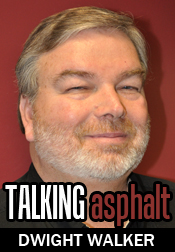 I just got back from the National Pavement Preservation Conference in Nashville. The interest in pavement preservation is absolutely amazing! More than 500 people from all over the U.S. (and beyond) attended.
I just got back from the National Pavement Preservation Conference in Nashville. The interest in pavement preservation is absolutely amazing! More than 500 people from all over the U.S. (and beyond) attended.
For those of you who did not attend the conference, here are some of the things that I learned or found interesting:
• Highway agencies are making a significant shift in their approach to pavement preservation. They are really getting into it. They are putting money in their budgets for pavement preservation treatments, developing specifications, evaluating technologies, even allowing alternate bids of treatments (e.g., thin-lift overlays vs. micro-surfacing).
• MAP-21, the newly passed and signed federal highway funding authorization bill, contains language regarding pavement preservation and clearly makes preservation eligible for federal funding.
• One of the biggest challenges facing pavement preservation is finding the optimal way to explain to the public, politicians and agency management why we want to spend money and work on “good” roads. It’s basically “spend a little now to avoid a bigger problem later.” The analogy was given of dental care, “a $75 dental cleaning now vs. a $1,000 root canal later on.” It’s a matter of education; a media campaign may be needed.
• Most of one day was devoted to field demonstrations of various pavement preservation techniques. These demonstrations and displays were extremely well done and informative. Live placements of chip and scrub seals, micro-surfacing and cape seals were done. Also two proprietary treatments, FiberMat and Skidabrader were demonstrated. Additionally, five highly specialized surface sealers were shown. These sealers were formulated with various additives to provide oxidation and weathering protection. The additives included polymer, fibers, ground tire rubber, Gilsonite, and rejuvenating agents. Examples of crack sealing techniques were also shown.
• There was much of discussion of thin-lift hot mix (or warm mix) as a pavement preservation technique. In fact, thin overlays are currently the most widely used preservation approach. But, some adjustments from conventional overlays may be needed, such as reduced top-size of the aggregate, awareness of reduced time to roll (because the thin mat cools quickly), etc.
The conference was a huge success. It was shown that pavement preservation techniques have mostly moved from an “art” to a “science” status. Better specifications and characterization tests are available or under development, although much work remains to be done. New materials and techniques are coming. And, the familiarity from gaining experience will lead to even more improvements.
In my simplistic view, pavement preservation is getting the longest pavement life for the lowest practical cost. Pavement preservation uses the mantra, “the right treatment, to the right pavement, at the right time.”
And, with the interest demonstrated at the conference, it is clear that the time is right now for pavement preservation.
For more detailed information, visit these websites:
• www.pavementpreservation.org National Center for Pavement Preservation
• www.fp2.org FP2 Inc. (formerly the Foundation for Pavement Preservation)
• www.aema.org Asphalt Emulsions Manufacturers Association (AEMA)
• www.slurry.org International Slurry Surfacing Association (ISSA)
• www.arra.org Asphalt Recycling and Reclaiming Association (ARRA)














